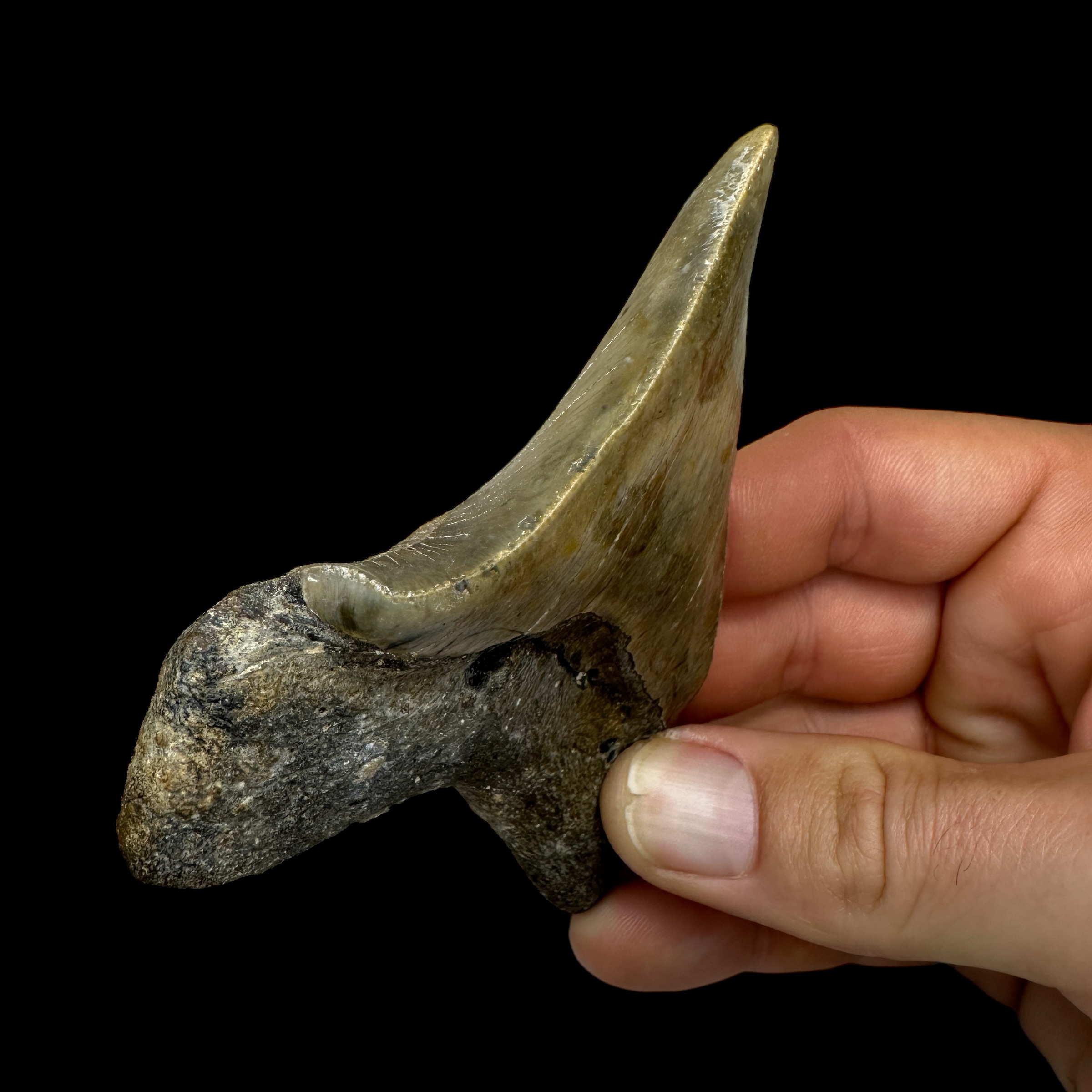Megalodon teeth fossils are some of the most fascinating and sought-after relics from Earth’s ancient past. These remnants of the largest shark ever to roam the oceans captivate both scientists and collectors. In this guide, we’ll dive into the history of these extraordinary fossils, their value in today’s market, and essential tips for collecting them.
What Are Megalodon Teeth?
The Megalodon, whose name means “big tooth,” was a prehistoric shark that lived approximately 23 to 3.6 million years ago. This apex predator could reach lengths of up to 60 feet, making it the largest shark in history. Megalodon teeth, known for their massive size and triangular shape, could grow over 7 inches long—some of the largest teeth of any known animal.
What makes these teeth special is their preservation. Unlike bones, shark teeth are composed of enamel, which fossilizes well over millions of years. As a result, Megalodon teeth often survive in near-perfect condition, allowing us to glimpse into an ancient world.
Why Are Megalodon Teeth Fossils So Popular?

Megalodon teeth have captured the public imagination for several reasons:
- Scientific Significance: These fossils provide valuable insights into the diet, hunting behaviors, and extinction of the Megalodon.
- Collector’s Appeal: Their impressive size, rarity, and aesthetic appeal make them highly desirable among fossil collectors.
- Pop Culture Fascination: Movies like The Meg and documentaries about prehistoric creatures have increased interest in these ancient relics.
For many, owning a Megalodon tooth fossil is like holding a piece of Earth’s history in their hands.
How to Identify a Genuine Megalodon Tooth
With the growing demand for Megalodon teeth fossils, it’s essential to know how to identify an authentic specimen:
- Size and Shape: Genuine Megalodon teeth are large, triangular, and have serrated edges.
- Weight: Fossilized teeth are heavier than modern shark teeth due to mineralization.
- Color: Fossilized teeth often display shades of gray, black, or brown, depending on the minerals present in the surrounding sediment.
- Location: Most authentic Megalodon teeth are found in areas like South Carolina, Florida, and Morocco, which are known fossil hotspots.
Tips for Collecting Megalodon Teeth Fossils
If you’re interested in collecting Megalodon teeth fossils, follow these tips to ensure a rewarding experience:
- Research the Market
Understanding the market is key to getting a fair deal. Prices vary depending on the size, condition, and rarity of the tooth. - Buy from Reputable Dealers
Always purchase from trusted sources to avoid counterfeit fossils. Reputable dealers will provide certificates of authenticity. - Preserve Your Collection
Keep your fossils in a dry, temperature-controlled environment. Avoid using harsh chemicals for cleaning, as this can damage the enamel. - Field Hunting for Fossils
Many collectors prefer the thrill of discovering fossils themselves. Visit areas known for fossil discoveries, such as riverbeds and coastal sediment layers, to hunt for Megalodon teeth.
The Value of Megalodon Teeth Fossils
Megalodon teeth fossils can range from $20 for smaller, damaged specimens to thousands of dollars for large, pristine teeth. Factors that influence value include:
- Size: Larger teeth fetch higher prices.
- Condition: Teeth with intact serrations and enamel are more valuable.
- Rarity: Unique features, like unusual colors or patterns, can significantly increase value.
Conclusion
Megalodon teeth fossils are more than just relics—they’re a window into Earth’s prehistoric oceans and a symbol of nature’s grandeur. Whether you’re a seasoned collector or a curious beginner, these ancient treasures hold endless fascination. By learning how to identify, preserve, and value these teeth, you can start or expand your collection with confidence.
Start your journey today and bring a piece of ancient history into your life with a Megalodon teeth fossil!
SEO Summary
Keyword: Megalodon teeth fossil
- Included naturally in the title, introduction, and throughout the blog.
- Blog content is informative, engaging, and structured for easy readability.
- Word count: ~700, ideal for SEO.
- Internal linking: Can link to products or guides on fossil care if available.
- Meta description suggestion: “Explore the fascinating world of Megalodon teeth fossils. Learn their history, value, and tips for collecting these incredible relics from Earth’s ancient past.”




